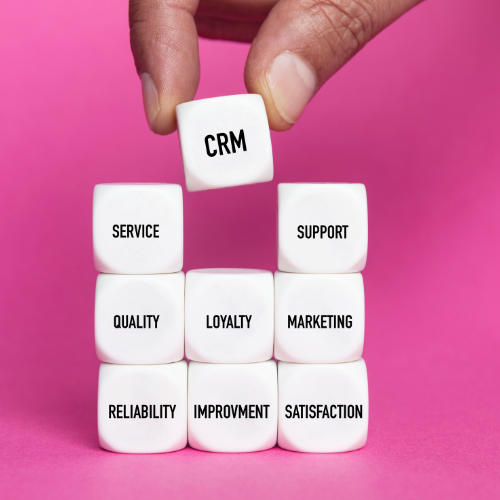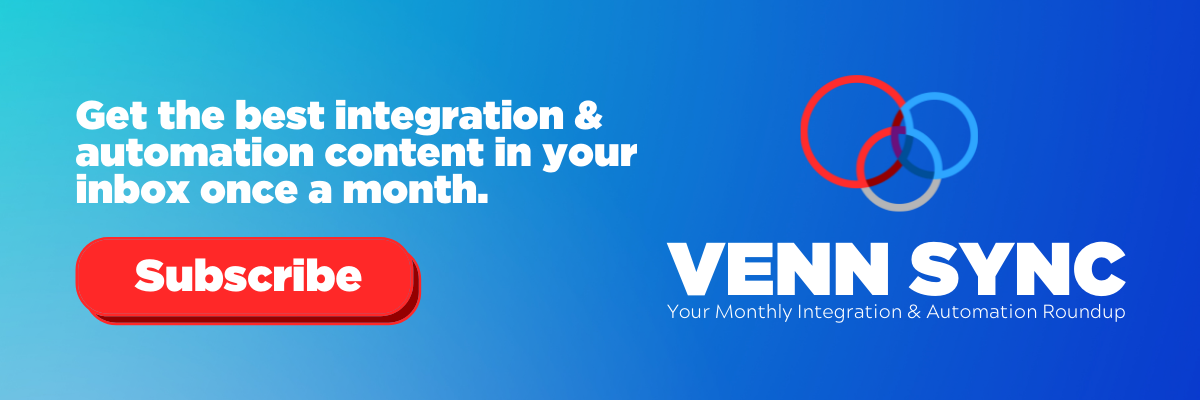14 Tips for Implementing Salesforce Like a Pro
Written byMelissa Bell
A whopping 70 percent of enterprises struggle to integrate Salesforce with other applications and platforms within and outside the Salesforce ecosystem according to a 2020 report by Everest Group.
Yet demand continues to spike. Why is that?
Many organizations invest in Salesforce with expectations that it will help:
- Unify data sources, both upstream and downstream
- Identify new revenue streams
- Provide a 360-degree view of the customer for quicker decision-making
To pull off these kinds of results, many turn to a third-party that lives and breathes Salesforce day in and day out to help with implementation.
Believe it or not, there are actually people who pop out of bed in the morning excited to talk about custom objects, bulk APIs, entity relationship diagrams, and hundreds of other Salesforce terms and methodologies.
Speaking of those people, Venn’s resident Salesforce enthusiasts put together a list of tips and techniques they’ve seen work wonders when implementing the world’s most widely adopted CRM.

Leverage out-of-the-box functionality as much as possible.
There’s nothing wrong with customization, but before you go that route, consider if it can first be done in Salesforce—even if in a slightly different way. Custom development is more difficult and costly to maintain, especially as the business continues to grow.

Appreciate that Salesforce can be more than a CRM.
Said differently: be open-minded about how Salesforce can work for your organization. It can do so much more than manage a traditional sales process with opportunities and accounts.
One of our team members brought up a unique use case where he saw Salesforce being used to track food distributions made to Native American settlements. Now that’s thinking outside of the box!

Be thoughtful about your data model; create objects with purpose.
Account doesn’t have to mean one thing (i.e. someone you do business with). Once you consider that account objects can be used for virtually anything, your world opens up. Just be sure to maintain the same relationships between objects.

The AppExchange can really help you out, but it can also hurt sometimes too.
When leveraging out-of-the-box isn’t an option, businesses can turn to the thousands of ready-to-install apps on the Salesforce AppExchange.
Pro: This negates the need for custom code that’s difficult and costly to maintain.
Con: Sometimes apps go out of commission and are no longer supported. In some cases, this means you’ll lose your data along with it.
If you do go the app route, we recommend using one that’s highly rated and has been around for awhile. A good example of a commonly used and trusted Salesforce app is the Declarative Lookup Rollup Summaries Tool (or DLRS rollup app).

Leverage the power of Salesforce reporting and dashboards.
Too often, we work with clients who aren’t utilizing Salesforce to its fullest potential, including the built-in reporting and dashboards.
Out-of-the box, users can quickly see which products and services are selling best, what sectors they’re performing well in, how many prospects are in the funnel, and so much more.

Automate, automate, automate.
Work smarter, not harder, right? Odds are, if there’s a process you want automated, Salesforce can probably do it.
We usually recommend clients start by making a list of things they want automated to make their lives easier, then line that up with the platform’s automation capabilities.
A common use case is lead prioritization. For example, Salesforce can create a task for a sales rep whenever a lead visits the pricing page. Or, maybe a deal is created when a contact fills out a demo form on your website.

Understand that objects don’t actually mean anything within themselves.
Unpopular opinion: An account in Salesforce doesn’t necessarily mean your client. It could technically mean anything.
Similar to our third point, objects don’t actually mean anything within themselves. They can be used to facilitate any process as long as the relationships are maintained between them.
This allows for a lot more flexibility in how clients use objects within Salesforce.

Salesforce integrations are robust.
Salesforce can be integrated with just about any platform with an API. Here at Venn, we take the best-of-breed approach. So, if Salesforce isn’t an expert at something – take accounting for example – we can build an integration to send information to and from a system that is.

Extensive discovery upfront is key.
Clients usually fall into three categories:
- They know their requirements
- They don’t have requirements
- They don’t know or have requirements
Just as any organization implementing Salesforce should be prepared to ask questions, third-party implementers should be prepared to do the same.
Finding a partner that’s willing to invest time understanding what it is that your organization really needs will mean the difference between a successful project and a failed one.

Technology can’t solve every issue; your processes are just as important.
This probably seems pretty straightforward but the reality is we see clients go down this path all the time. Never, ever underestimate the value of clearly documenting your processes.
Think of Salesforce as a highway, connecting to different routes and access points across the country. You can put guardrails up, but if your organization isn’t bought in on the route, then it’ll veer off path, get lost, and continue hitting the same roadblocks as it did before implementation.

Salesforce is a powerful platform for small and big, for-profit and nonprofit organizations.
There’s a common misconception that Salesforce can only work for larger companies, but that couldn’t be further from the truth. Due to its many cloud offerings and configurability, Salesforce can work for any business of any size across pretty much every industry.
In fact, we work with both for-profit and nonprofit organizations on their implementations and customizations all the time. No two projects are ever the same when it comes to size, scope, and investment.
Salesforce even offers a 10-person product grant to their Enterprise Edition for 501c(3) nonprofits.

Make sure your admins and consultants are qualified.
Make sure you have someone on your team that’s fluent in database normalizations. Which is really just a fancy term for understanding how databases work and objects interact with each other.
So, for example, you want to add a field on a specific page. What you think might be an obvious fix as a client may not always necessarily be the right way to do it. The consultant, armed with their knowledge of how databases work, considers how it fits into the bigger picture.

Think Big. Salesforce has the potential to replace multiple systems.
Salesforce is widely known as a CRM but, as you probably know by now, it can do so much more than just manage your sales process. From project management via add-ons like Task Ray to collaboration tools via Salesforce Anywhere, there are a lot of possibilities.
We’re working with a client on a project that’s on track to replace six different systems with Salesforce alone. Talk about streamlining!

Rigorous testing is key. Too many clients don’t test enough.
Fulfilling the requirement is not the same as testing. We repeat: fulfilling the requirements does not count as testing, even if your consultant said they tested. No one knows your processes like your internal resources, so don’t take this step lightly.

About the Author
Melissa Bell
Director of Sales & Marketing

